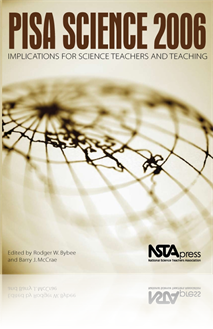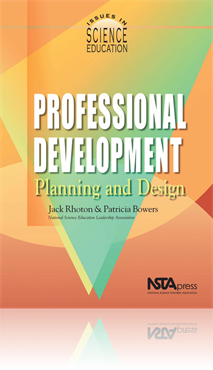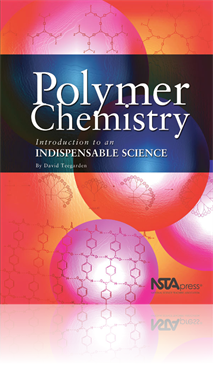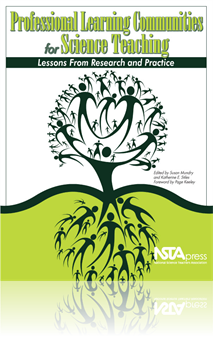All Resources
Book Chapter
Scientific Literacy: Implications of PISA Science 2006 for Teachers and Teaching
In the first part of this chapter, the authors briefly review the notion of scientific literacy, emphasize its central focus in the PISA 2006 survey, highlight the overall test performance of countries and students, and make some observations about t...
Book Chapter
PISA 2006: Test Development and Design
In PISA 2006 three subject domains were tested, with science being the major domain for the first time in a PISA survey and reading and mathematics being minor domains. This chapter first describes the process by which the PISA consortium, led by the...
Book Chapter
PISA: Frequently Answered Criticisms
Studies such as PISA are routinely criticized by educational commentators—particularly when the results are not consistent with their preconceived ideas about the relative merits and efficiencies of various educational practices and systems. This c...
Book Chapter
PISA Science 2006: International Results
Throughout the world education authorities want to know the capacities that their students develop during their formative years in schools. They want to know to what extent students have learned fundamental scientific concept and theories and how wel...
Book Chapter
Knowledge of and About Science
An intuitive and common sense understanding of a science assessment would be that it aims at measuring students' knowledge of and about science. The aim of PISA is to assess to what degree students can apply their knowledge in contexts of relevance t...
Book Chapter
What Scientific Knowledge Remains When the Rest is Forgotten?
The PISA 2006 definition of scientific literacy encompasses three competencies—identifying scientific issues, explaining phenomena scientifically, and using scientific evidence. The results for scientific literacy show clearly that some countries h...
Book Chapter
What Lies Behind Finnish Students' Success in PISA Science?
Finnish students' performance in the PISA scientific literacy assessment has been excellent, and even improved between the three-year cycles of PISA measurements. It is not easy to explain the good results, but this chapter focuses on several factors...
Book Chapter
Overcoming Challenges and Succeeding in PISA Science 2006
Despite the absence of a national science curriculum and the inevitable differences in science curriculum across Canada, Canadian students ranked third in the world on the PISA 2006 science assessment. This chapter presents three possible explanation...
Book Chapter
Whether or not a boat floats is determined by its shape and density. In this activity, students discover how and why boats float by designing different hull shapes and finding which design holds the most weight. Students record, calculate, and interp...
Book Chapter
Determining the Size and Shape of the Blind Spot
What exactly is the blind spot? It is the place where the optic nerve meets the back of the retina. Because no sensory cells are present in the retina at the meeting point, a “hole” is created in the field of view of each eye. The brain “fills ...
Journal Article
The word sort is just 1 of 30 active-learning and critical-thinking strategies that was implemented into a community college nutrition course over an academic year (two semesters) during a mixed-design research study. The authors wanted to know if a ...
Journal Article
Interest in science and technology is essential to good citizenship. By adapting items from other scales and writing new items, the authors developed the Attitudes Toward Science and Technology scale, containing 30 items. The norm group consisted of ...
Journal Article
The many and diverse demands on faculty at primarily undergraduate institutions (PUIs) are such that any research endeavors undertaken must be efficient and beneficial to both students and faculty. Sustaining faculty productivity into midcareer and b...
Journal Article
In this month’s column, the author admits that she didn’t have a particularly positive image of student-athletes when she began teaching. She anticipated that the “student” part of that name was merely vestigial: a useless appendage not yet e...
Journal Article
Case Study: Learning About the Nature of Science With Case Studies
Case studies are an effective way to help students understand how science works, and perhaps even more importantly, how science knowledge is constructed. Yet often when we teach the content of science, we overlook the nature of science (NOS), and in ...
Journal Article
Favorite Demonstration: Using Dice to Explore the Consequences of DNA Mutations
Working collaboratively, students explore the effect of different types of DNA mutations using dice. The exercise provides students with a tangible way of visualizing how mutations may contribute to genetic diversity and the randomness with which the...
Journal Article
Thomas Lord in his column in the November/December issue of JCST claims that “The shift from academic merit to student consumerism is one of the two greatest reversals of direction in all the history of American Higher Education …” He goes on t...
eBook
Issues in Science Education: Professional Development Leadership and the Diverse Learner (e-book)
Make science teaching better for every student. Help learners from different backgrounds—and with different learning styles—by developing new skills, resources, and knowledge. This book discusses the ways in which professional development can hel...
eBook
Issues in Science Education: Professional Development Planning and Design (e-book)
There’s got to be more to professional development than in-service workshops. This thoughtful book paves the way to change. It shows the circumstances under which professional development has the most impact on student learning, reviews programs th...
eBook
Polymer Chemistry: Introduction to an Indispensable Science (e-book)
Here’s an interesting statistic: More than half of all chemists work on some aspect of polymers. For high school teachers who want to introduce polymer science basics, properties, and uses, this book is uniquely helpful—much deeper than simple mo...
eBook
The Creation Controversy and The Science Classroom (e-book)
Organized into three practical parts, The Creation Controversy provides teachers with insights into modern science and the Book of Genesis, effective strategies for teaching evolution and other controversial topics, and the NSTA Position Statement on...
Book Chapter
Daniel and the Old Lion Hunter
Daniel Bernoulli wanted to be the Newton of the eighteenth century; he thought he could do it by studying fluids (by that he meant liquid and gases). His thoughts and his principle will percolate in other heads and help bring changes in science and l...
Book Chapter
The Promise of Professional Learning Communities
In this chapter, the authors discuss the origin and the characteristics of professional learning communities (PLCs) and summarize the research findings on the impact and results achieved by schools that are organized as PLCs. ...
Book Chapter
"Late-Start Mondays": The Catalyst for Change in an Urban High School
At the high school level, the task of creating a whole-school community of practice is often monumental and requires tremendous energy to disrupt the status quo. The story that follows describes the process by which a large, urban high school formed ...




.jpg)
.jpg)






